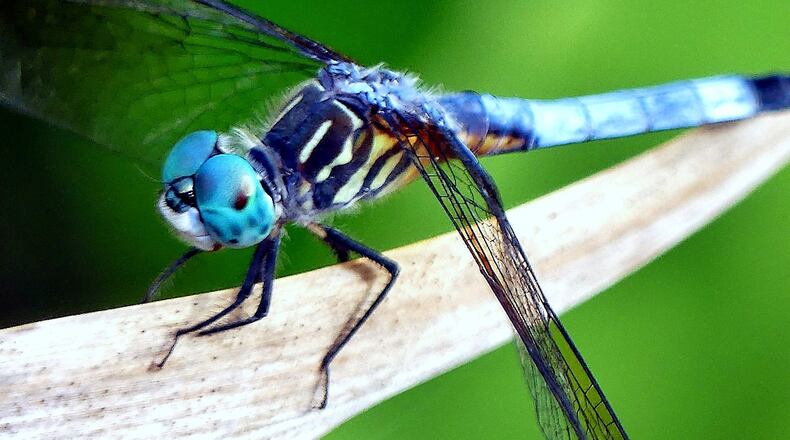At the Newman Wetlands Center in Clayton County last weekend, we went looking for some ferocious aerial predators: “odonates,” better known as dragonflies and damselflies. Both groups belong to the insect order Odonata.
Despite their reputation as fierce hunters of other insects, dragonflies and damselflies are some of our most admired winged creatures — beautiful, spectacular and highly beneficial. A single dragonfly may consume hundreds of mosquitoes in a day, snatching the bloodsuckers clean out of the air.
Dragonflies also may be the envy of aeronautical engineers, who have longed to build flying machines that could duplicate the insects’ amazing flying skills. Dragonflies can dart quickly with seemingly little effort in six directions — up and down, forward and backward and side to side, and can sustain bursts of speed of 30 mph. They can hover, too.
Our leader during our walk was Giff Beaton, a skilled flyer himself — a pilot for Delta Air Lines. He’s also a leading odonate expert and the author of the splendid book “Dragonflies & Damselflies of Georgia and the Southeast.”
Georgia, he said, has 125 species of dragonflies and 53 damselfly species. They come in a wide range of colors, sizes and behaviors. Nearly all of them, however, need a body of water in which to lay their eggs and for their larvae to develop into adults.
Despite being close kin, the two odonate groups have markedly different eyes, body shapes, wing shapes and resting positions, Beaton noted. One example: Dragonflies have huge eyes that cover nearly the entire head; damselflies have smaller eyes with a gap between them.
With Beaton leading the way on a boardwalk across a marshy pond and wielding a net to snare some of the creatures, we got close-up looks at several of Georgia‘s most common dragonflies: Eastern pond hawk, blue dasher, slaty skimmer, Carolina saddlebags, Eastern amberwing, swift setwing and others.
IN THE SKY: From David Dundee, Tellus Science Museum astronomer: The moon is in last quarter tonight. Brilliant Venus is low in the west just after dark and sets about two hours later. Mars, also bright-shining, is in the east around dusk. Jupiter is in the southwest at dusk. Saturn is high in the south just after dark.
About the Author
Keep Reading
The Latest
Featured


